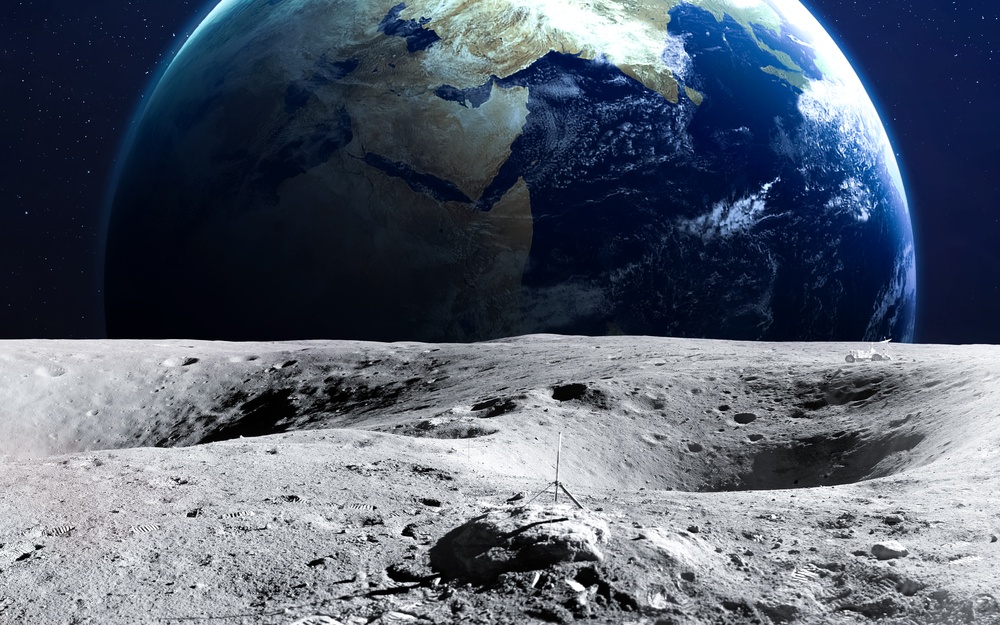Key takeaways
- The Moon getting farther away adds about 1.5 inches to its orbit each year.
- Scientists use lasers bounced off Moon mirrors to track the exact distance.
- Ocean tides create bulges that pull the Moon forward in its path.
- As the Moon drifts out, Earth’s spin slows and days grow slightly longer.
- In the distant future, tidal locking and the Sun’s changes will end this effect.
Is the Moon Getting Farther Away?
Yes. Right now, the Moon is drifting away from Earth at about 1.5 inches per year. Over time, those inches add up. Yet the change is so tiny that we won’t notice it in our lifetimes.
How We Measure Moon Distance
Since the Apollo missions, astronauts left special mirrors on the Moon’s surface. Today, scientists on Earth aim powerful lasers at those mirrors. Then they time how long the light takes to bounce back. Because light travels so fast, even a small delay shows us the Moon getting farther away.
In one month, the Moon’s distance shifts by about 12,400 miles. That’s because its path around Earth is oval, not a perfect circle. At its closest, we see a “supermoon” looking larger in our sky. But the slow yearly increase of 1.5 inches is separate from this monthly swing.
Why is the Moon Getting Farther Away?
It all comes down to tides. The Moon’s gravity pulls harder on the side of Earth nearest to it. The ocean water bulges toward the Moon and also bulges on the far side. As Earth spins, these bulges race ahead of the Moon’s position.
Because the bulges lead the Moon, they tug it forward in its orbit. That extra pull gives the Moon more speed. When an object in space speeds up, its path grows larger. So the Moon getting farther away is basically gaining orbital energy from Earth’s spin.
Effects on Earth
As the Moon drifts outward, Earth’s rotation slows down. In the same way a figure skater extends her arms to spin slower, Earth loses a bit of its spin speed. Fortunately, this slowdown is tiny. A day lengthens by just a fraction of a second every century.
Still, over millions of years the change adds up. That explains why long ago a day on Earth was shorter. Today, our 24-hour day came from billions of years of slow braking by lunar tides.
Life in the Past on Earth
Billions of years ago, right after a Mars-size body hit young Earth, the Moon formed much closer. It would have filled much more of our sky. Scientists study ancient coral and clam fossils to learn how fast Earth spun back then. Those creatures left daily growth rings in their shells.
By counting rings and analyzing their chemistry, researchers found that about 70 million years ago, the day was 23.5 hours long. That matches predictions from how quickly the Moon was moving outward.
What the Future Holds for the Moon
If nothing else changed, Earth and the Moon would eventually become tidally locked. That means Earth would turn once in the same time the Moon orbits. Then the Moon getting farther away would stop. You would only ever see one side of our planet from the Moon’s surface.
However, in about a billion years the Sun will brighten enough to evaporate Earth’s oceans. Without big tides, the Moon would stop moving out. A few billion years later, the Sun will swell into a red giant and almost certainly engulf both worlds.
Luckily, these events lie so far ahead that no one needs to worry. For now, we can enjoy the tides on our beaches, watch lunar eclipses, and marvel at the Moon each night.
FAQs
How will the Moon getting farther away change tides?
Since tides depend on gravity and distance, a slightly more distant Moon will cause marginally weaker tides. But the difference will be too small to notice for millions of years.
Can laser measurements ever stop?
As long as scientists maintain the lunar mirrors and have laser equipment, they can keep tracking the distance. If equipment ages out, future missions could place new reflectors.
Will solar eclipses end when the Moon moves away?
Yes. One day the Moon will look too small to cover the Sun completely, ending total eclipses. But that won’t happen for over half a billion years.
Could the Moon ever come back closer?
Under current physics, no. The Moon’s orbit will only expand until tides fade or other cosmic events intervene.
